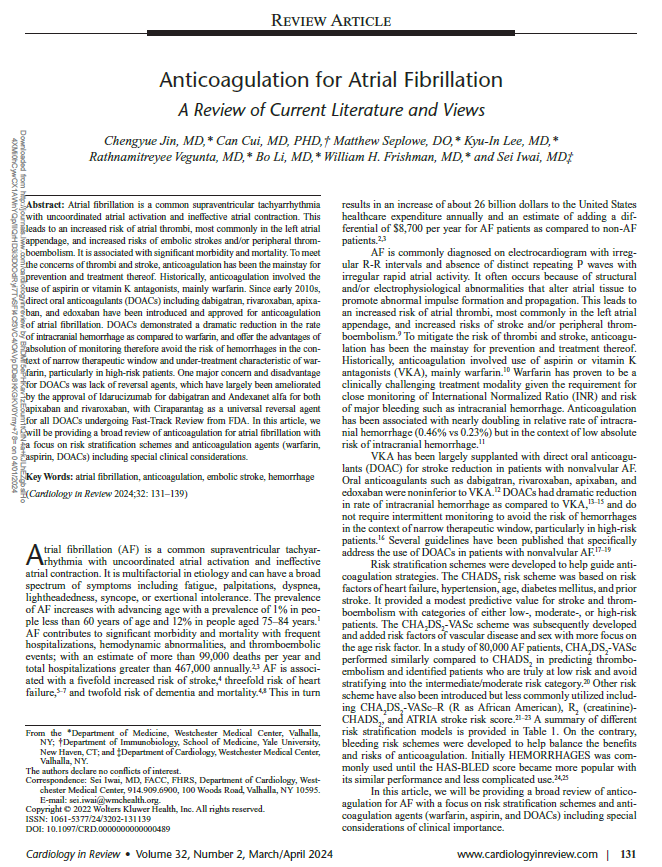Anticoagulation for Atrial Fibrillation: A Review of Current Literature and Views
April 2024
Abstract
Atrial fibrillation is a common supraventricular tachyarrhythmia with uncoordinated atrial activation and ineffective atrial contraction. This leads to an increased risk of atrial thrombi, most commonly in the left atrial appendage, and increased risks of embolic strokes and/or peripheral thromboembolism. It is associated with significant morbidity and mortality. To meet the concerns of thrombi and stroke, anticoagulation has been the mainstay for prevention and treatment thereof. Historically, anticoagulation involved the use of aspirin or vitamin K antagonists, mainly warfarin.
Since early 2010s, direct oral anticoagulants (DOACs) including dabigatran, rivaroxaban, apixaban, and edoxaban have been introduced and approved for anticoagulation of atrial fibrillation. DOACs demonstrated a dramatic reduction in the rate of intracranial hemorrhage as compared to warfarin, and offer the advantages of absolution of monitoring therefore avoid the risk of hemorrhages in the context of narrow therapeutic window and under-treatment characteristic of warfarin, particularly in high-risk patients.
One major concern and disadvantage for DOACs was lack of reversal agents, which have largely been ameliorated by the approval of Idarucizumab for dabigatran and Andexanet alfa for both apixaban and rivaroxaban, with Ciraparantag as a universal reversal agent for all DOACs undergoing Fast-Track Review from FDA. In this article, we will be providing a broad review of anticoagulation for atrial fibrillation with a focus on risk stratification schemes and anticoagulation agents (warfarin, aspirin, DOACs) including special clinical considerations.

